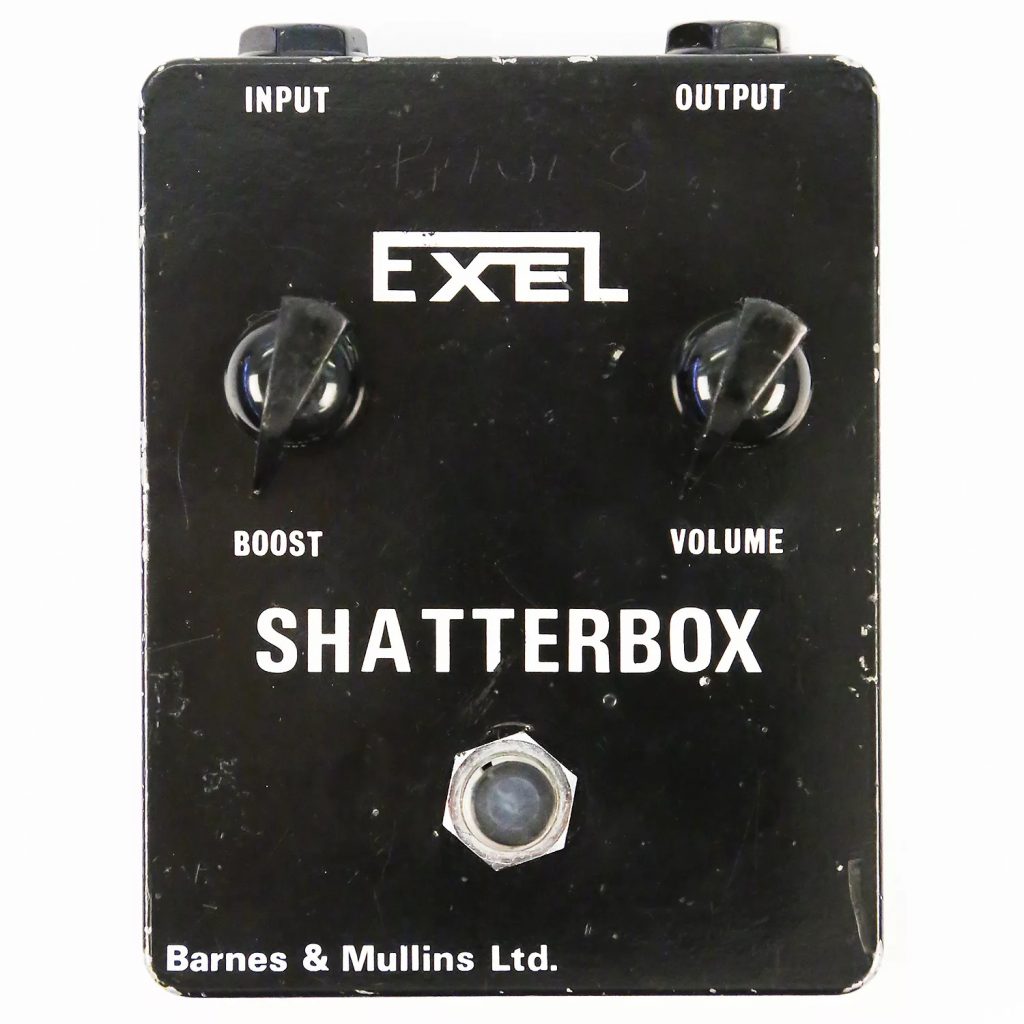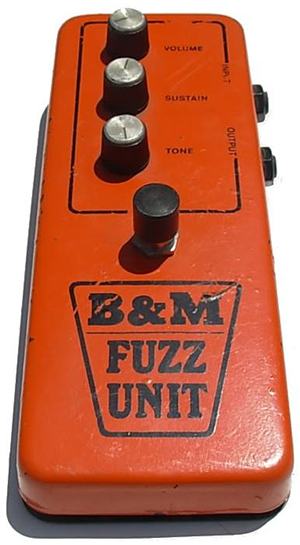The Exel Shatterbox (not to be confused with the John Hornby Skewes Shatterbox) was a compact fuzz box built from the late 1960s into the 1970s, and sold by Barnes & Mullins (B&M).
Barnes & Mullins is a well-known British musical instruments distributor, which was founded by banjo duo Samuel ‘Bowley’ Barnes & Albert Mullins in 1895. B&M-branded musical instruments have been sold across the world since the early 20th century, and the short period during the 1960s & 1970s when B&M were involved in the fuzz boxes trade makes up a very small chapter in the company’s history. 1
The earliest mention of a Barnes & Mullins fuzz box is from a report of the British Musical Instrument Industries trade fair, which was held from the 23rd to the 27th of August, in 1965.2 A ‘Tone Bender’ was described as being on offer by B&M, but the listed price of £14 suggests that the unit being demonstrated could have actually been the 1965 Sola Sound Tone Bender.
B&M might have been acting as distributers of Gary Hurst’s pedal, but it is equally possible, however, that B&M were offering their own version of the fuzz box, and that examples of this model simply aren’t known yet to have survived. There is nothing that suggests that the 1965 “B&M Tone Bender” is related to the Exel Shatterbox.

A new Barnes & Mullins fuzz box was advertised in the 1969 Bell Musical Instruments catalogue. This fuzz box was named the ‘Shatterbox’, and was part of the ‘Exel’ series of effects, which also included a treble booster and a reverb unit. The first known instance of B&M demonstrating their Exel series was at Musikmesse, in Frankfurt, in early 1969.3
The Exel Shatterbox was housed in a compact die-cast aluminium enclosure, as pictured above, and it had a simple control layout with only two dials to adjust the fuzz sound. These fuzz boxes typically resurface bearing a silicon two-transistor circuit, built on strip board. One particularly early example of the Exel Shatterbox is known to exist with a three-transistor circuit, built on tag board. (Photo credit: C. Nelson)
By the mid 1970s, Barnes & Mullins had discontinued the Exel pedals, and were supplying musicians with the B&M ‘Fuzz Unit’ instead. The Fuzz Unit was supplied to B&M by Sola Sound, and featured the same electronic circuit that Sola Sound were using in their ‘Jumbo’ Tone Bender, as well as for many of Sola Sound’s combined fuzz & wah pedals.
The B&M Fuzz Units typically came in orange enclosures (as below), with several different versions of the silkscreened graphics. Some examples came in dark grey enclosures instead. (Photo credit unknown)
Share your fuzz!
I welcome any comments, feedback, queries & corrections in relation to the Fuzzboxes.org project. Please get in touch via this contact form (or on the ‘contact‘ page).
Much of our understanding of the development of 1960s fuzz boxes comes from analysis of surviving pedals themselves, and so photos of pedals belonging to readers are particularly useful in furthering this research.
If you would like to contribute pictures of 1960s-era guitar effects to Fuzzboxes.org, then feel free to send in any pictures via the uploader below. Photos are greatly appreciated, and any submissions are not published on this website without advance agreement with the contributor.
- https://www.bandm.co.uk/about
- Beat Instrumental, October 1965, p. 10
- Beat Instrumental, February 1969, p. 24


